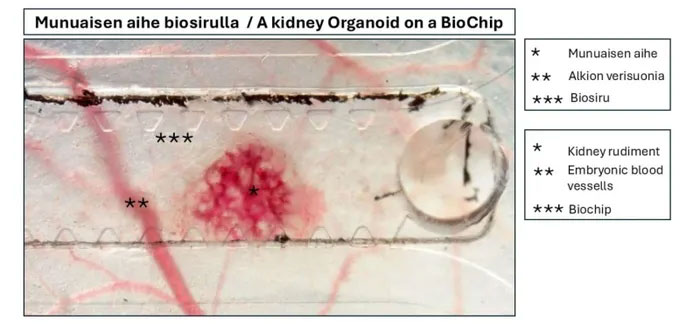Breakthrough in artificial organ culture
On November 14, the University of Oulu in Finland announced that its researchers have developed a new method to create functional blood vessels inside organoids - miniature models of organs grown in the laboratory.

The University of Oulu in Finland announced that its researchers have developed a new method for creating functional blood vessels inside organoids. (Photo: oulu.fi).
Organoids , which have structures and functions similar to actual organs in the body, play an important role in biomedical research. However, creating a complete vascular system inside an organoid has always been a major challenge.
The team at the University of Oulu solved this problem by using the chorioallantoic membrane (CAM) of chicken embryos and a specialized device. When cultured on the CAM membrane, blood vessels in the organoids not only formed, but also connected to the circulatory system of the chicken embryo, providing enough oxygen for development, explains Seppo Vainio, professor of developmental biology at the University of Oulu.
The breakthrough of this method is the ability to maintain the vascular network when transferring the organoids to other artificial culture environments. The technique, tested on kidney organoids (which are particularly difficult to vascularize), marks a significant advance in organoid technology. With functional blood vessels, these organoids behave more like real organs, making them particularly valuable for studying diseases and testing new drugs. The University of Oulu believes that this method could help scientists accelerate research into kidney-related diseases, cancer, diabetes and high blood pressure.
- Raising the internal organs right in the living body of mice
- Mini human brain culture to test hallucinogens
- The robot can now cultivate human organs quickly
- Organ transplantation ... 3D printing
- Raising an artificial 6-month-old brain, for the first time, a baby-like brain wave is emitted
- What is organ transplantation?
- How to register organ donors when they die?
- Artificial bone from transplanted pig cells for humans
- Baboons carry pig hearts for more than two years
- A new step in creating alternative organs for humans
- The boy lived for more than a year without a heart in his body
- 3D blood vessels
 13 causes of non-itchy rash
13 causes of non-itchy rash How the mouse with human ears changed the world?
How the mouse with human ears changed the world? The truth about 'fried rice syndrome!
The truth about 'fried rice syndrome! What is dental implant?
What is dental implant?